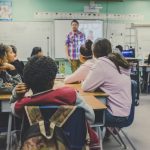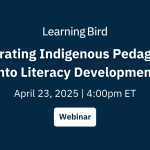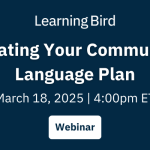Integrating Provincial Standards and Indigenous Ways of Knowing
Finding ways to integrate diverse knowledge in a classroom isn’t always easy for educators to accomplish. Often, we rely on things we know or have seen in classrooms as learners ourselves. However, this can mean we are using only certain types of knowledge in our classrooms. That can leave some learners feeling like schools do not represent their culture or identity. This post will share a few ways to integrate Indigenous knowledge and perspectives into your classes.
Partnering with First Nations
Learners and educators often have exposure only to western learning. It isn’t always easy to find new resources or ways of learning or take a different approach. Educators can integrate Indigenous ways of knowing using novels by Indigenous authors or culturally appropriate math examples. We’ve partnered with several First Nations to create content for educators to ensure their lessons reflect learners’ cultural perspectives.
Why are schools including Indigenous ways of knowing?
You may be aware that several provinces have begun mandating the inclusion of Indigenous knowledge in public school classrooms. Ministries of Education recognize that it is important for Indigenous learners to see themselves reflected in their learning. Non-Indigenous learners must also learn about the different nations that make up the Indigenous population in Canada.
The Ontario Ministry of Education plans to better support Indigenous learners: “First Nation, Métis, and Inuit students in Ontario will have the knowledge, skills, and confidence they need to successfully complete their elementary and secondary education in order to pursue post-secondary education or training and/or to enter the workforce. They will have the traditional and contemporary knowledge, skills, and attitudes required to be socially contributive, politically active, and economically prosperous citizens of the world. All students in Ontario will have knowledge and appreciation of contemporary and traditional First Nation, Métis, and Inuit traditions, cultures, and perspectives.”
This vision aligns with the Truth and Reconciliation Commission of Canada’s recommendations. In the calls to action, the commission recommends that “the Council of Ministers of Education, Canada to maintain an annual commitment to Aboriginal education issues, including:
-
- Developing and implementing Kindergarten to Grade Twelve curriculum and learning resources on Aboriginal peoples in Canadian history and the history and legacy of residential schools.
- Sharing information and best practices on teaching curriculum related to residential schools and Aboriginal history.
- Building student capacity for intercultural understanding, empathy, and mutual respect.
- Identifying teacher-training needs relating to the above.”
How can educators from non-Indigenous backgrounds integrate Indigenous knowledge respectfully?
The calls to action are something any educator can embrace and bring into their classroom. Integrating Indigenous ways of knowing into your classroom is considered an act of reconciliation. It can help Indigenous and non-Indigenous learners bridge the gap of understanding. The hard part may be where to start.
Learning which resources exist in your area or within your board is a great place to start. Perhaps your school board has an Indigenous or Aboriginal liaison or resource person. They may be able to connect you with Knowledge Keepers or Elders from a local First Nation. Knowledge Keepers and Elders may be able to visit your classroom or point you in the right direction. Knowledge Keepers and Elders are respected community members who hold particular knowledge. Learn more about the pedagogies of Elders.
Another excellent place to find resources is a local Friendship Centre. Friendship Centres are places where Indigenous people and families in more urban centres can access support and community. They often host events and learning days that are open to the public.
Exploring Diverse Perspectives Through Novel Studies
You can easily introduce learners to diverse perspectives through a novel study. Books enable learners to see and learn about many different peoples and places. Why not use an Indigenous author’s work in your class?
Lambton Kent District School Board decided to do just that with grade 11 English courses. Instead of Shakespeare, learners now engage with Indigenous novels, short stories, plays, and poetry. Learners have the opportunity to engage with authors and writers from Indigenous backgrounds in Canada. These texts provide more relevant insights than mid-15th century England.
Consider choosing a novel from an Indigenous author for your next novel study unit. A memoir such as Fatty Legs by Margaret-Olemaun Pokiak-Fenton and Christy Jordan-Fenton could help connect learners to the experiences of Indigenous Canadians, both historical and current. This unit would require you to prepare learners for difficult topics in Canadian history. Plan a preparation lesson to discuss what learners know about residential schooling. Here, you could use the Truth and Reconciliation Commission of Canada resources to prepare learners who may not have heard about this topic. It will also help learners of Indigenous background who may still be affected by the legacy of residential schooling.
In partnership with Treaty Six Education Council, Learning Bird created a unit on Fatty Legs that helps Indigenous and non-Indigenous educators and learners navigate the memoir and supports reconciliation through learning and sharing knowledge. One of the lessons, “Listening to Fatty Legs,” is a podcast that guides learners through a listening exercise.
Culturally-Relevant Math Examples
Math is a universal subject. No matter your culture or spoken language, basic math and equations are concepts woven into all societies. We use math in activities from planning buildings to constructing tipis to navigating by the stars. Indigenous ways of knowing involve an intimate relationship with math. Math is necessary for creating works of art or pieces of clothing. It can be integrated into many activities in outdoor education. Have you ever considered using music or games to introduce a topic like odds in math? Consider introducing the concept using a music app’s shuffle option and songs by Indigenous artists.
Including diverse artists accomplishes two things:
- It helps Indigenous learners feel included. Seeing yourself reflected in a positive light in learning objects is important for self-esteem and success.
- It exposes non-Indigenous learners to artists from different backgrounds that they may not have had the opportunity to hear. That creates interest and respect for Indigenous artists and exposes learners to excellent music!
A unit in math that uses Indigenous games and music is something any educator can do. We do not always have access to a particular First Nation’s knowledge to guide us. However, we can still honour Indigenous Peoples by introducing music or games learners can play while learning math.
Accessing Additional Resources
If you’re interested in learning more about the resources available through Learning Bird, you can register for a free 14-day trial account or contact us at achieve@learningbird.com.








